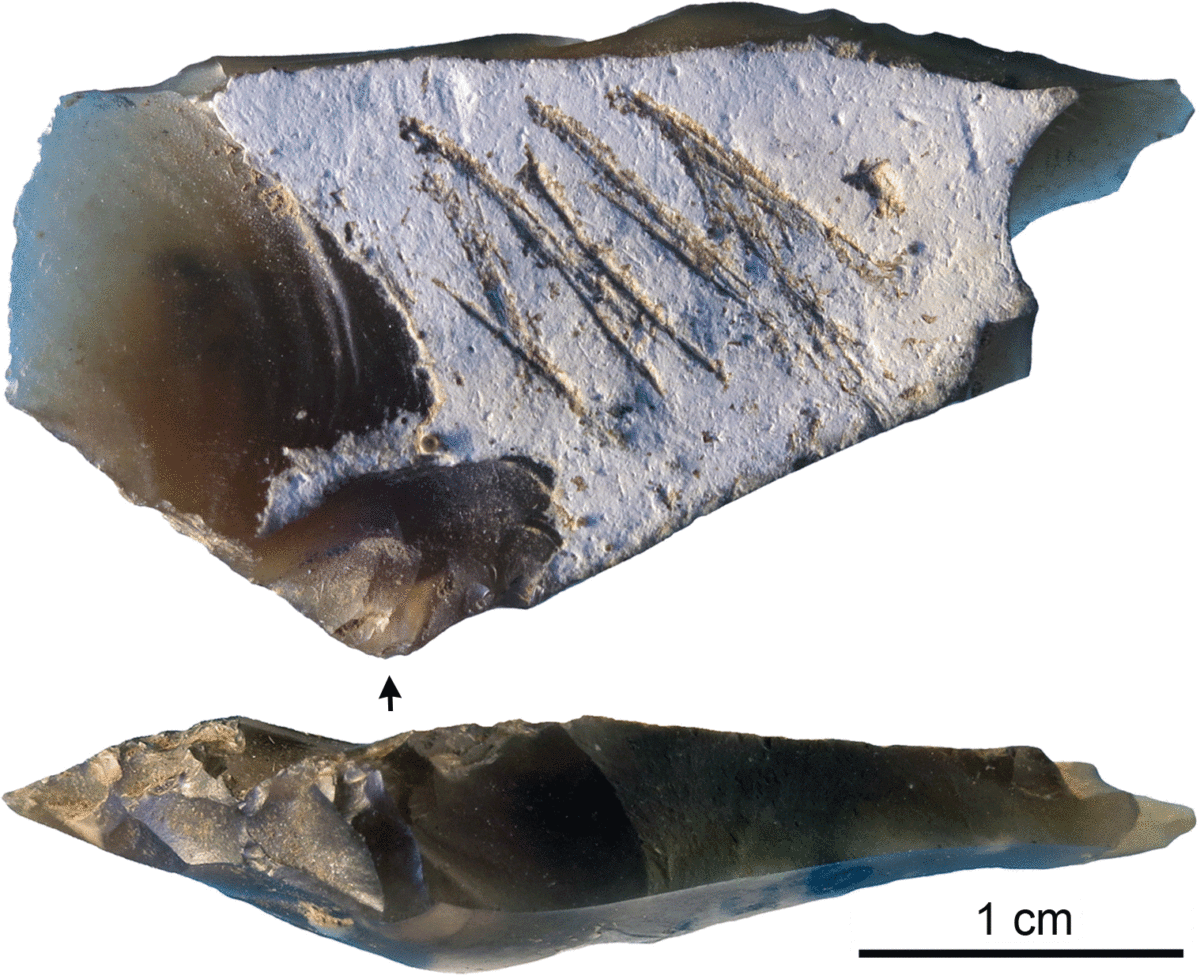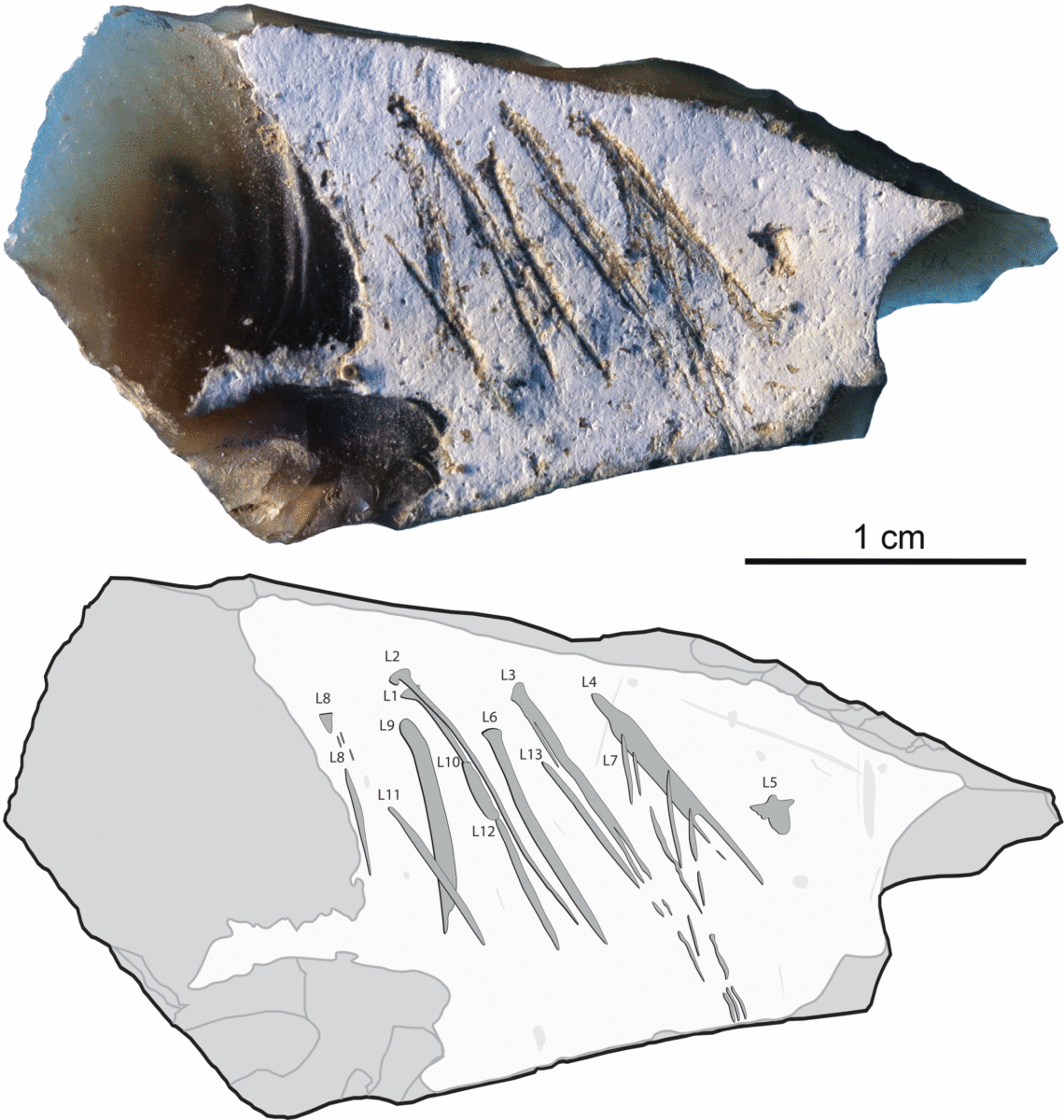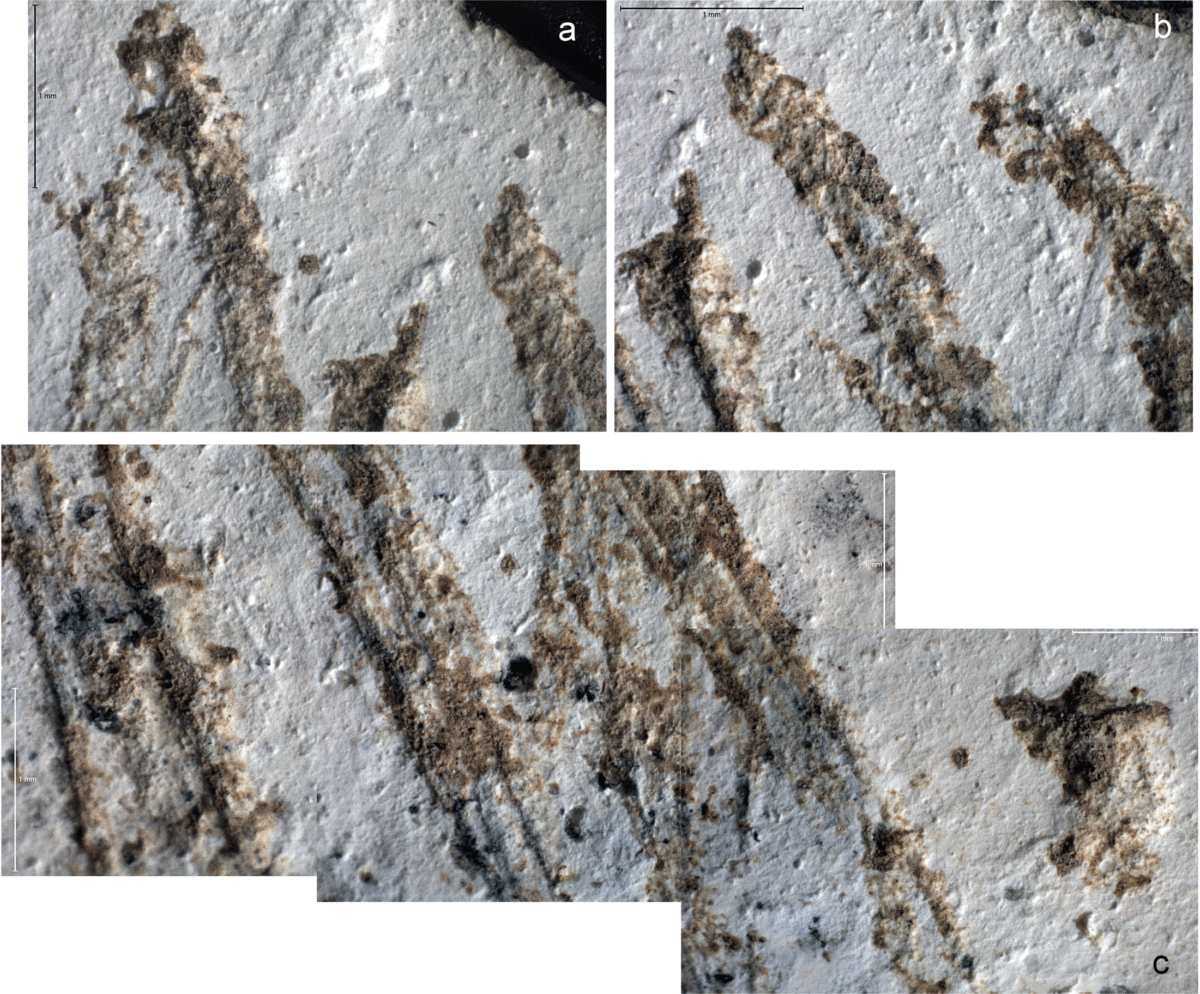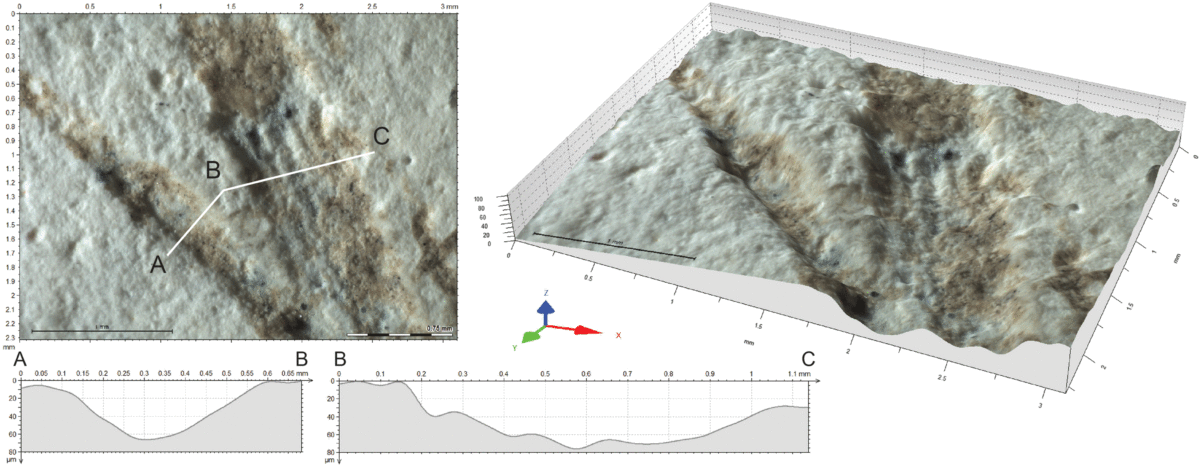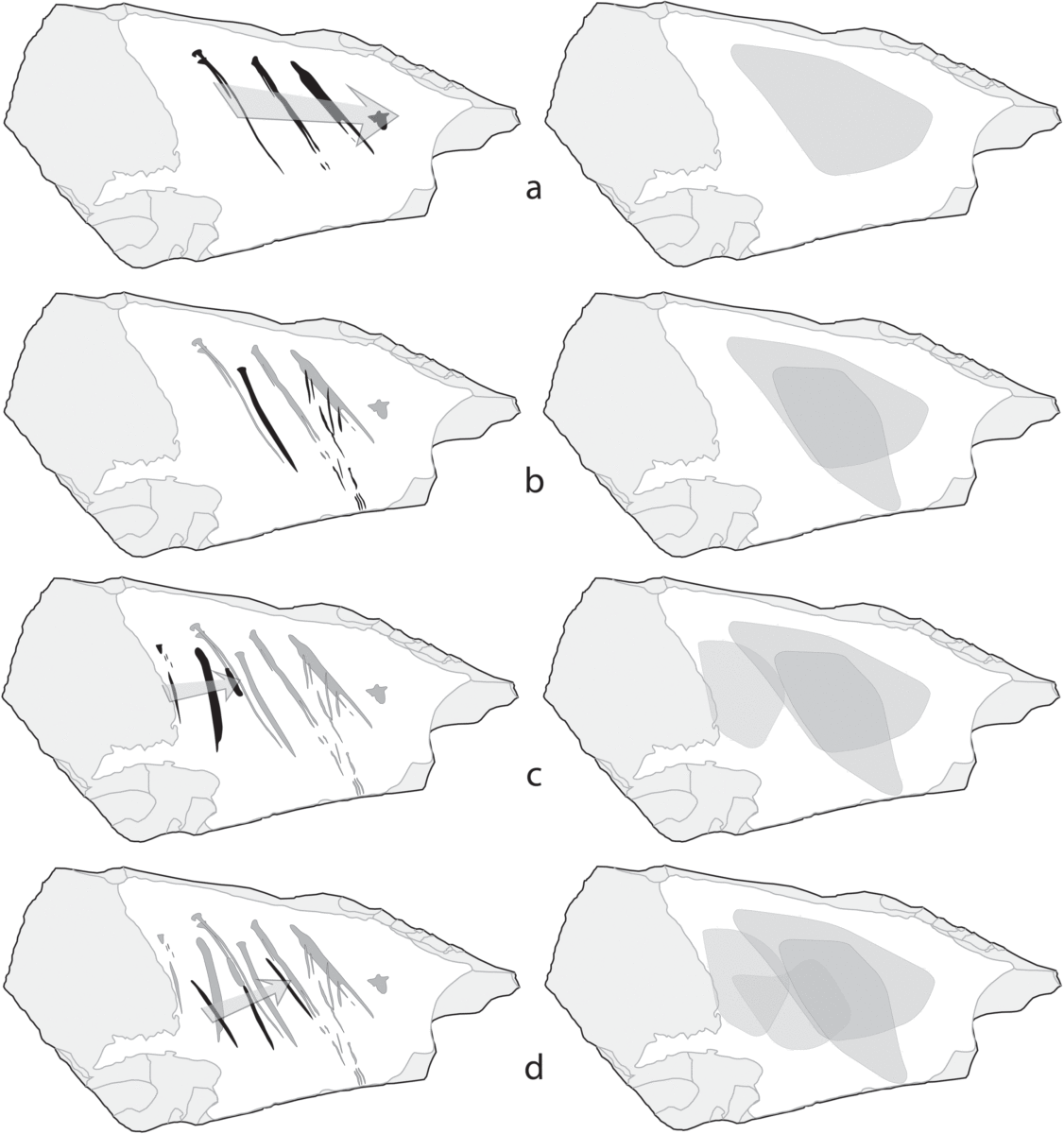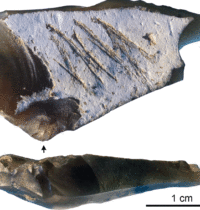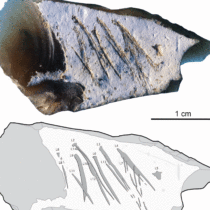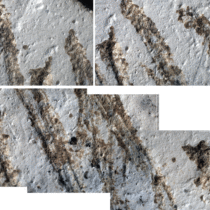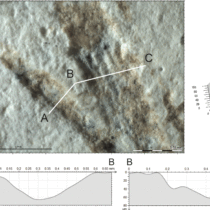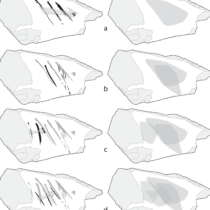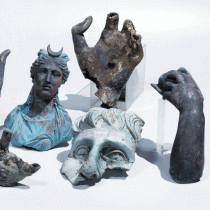A new study suggests that markings carved on flint stone by the Neanderthals could be symbolic representational art.
Researchers studied incised stones from the Kiik-Koba archaeological site in Crimea. The team, led by Anna Majkic of the University of Bordeaux, France, found that the edges of the flake indicate the markings were made after it was cut off from a larger piece, which means they were not made in a different context. Also, the flake is rather small so it couldn’t have been used to another end, for instance as a cutting or scraping tool. Its only purpose was to be engraved with the design, as is clearly, according to the team, suggested by the precision work and the intersecting angled markings with deliberate starting and ending points. Microscopic analysis and 3D reconstruction of the grooves on the cortex of this small flint flake, demonstrate that the incisions represent a deliberate engraving made by a skilled craftsman, probably with two different points. The lines are nearly perfectly framed into the cortex, testifying of well controlled motions.
Another interpretation could be that it was a method of recording a count, but the overalpping of the lines has made scientists reject this assumption, since they could not have been used as a number mark.
The research team propose that the Kiik-Koba flake be added to other evidence supporting the symbolic representational practices by Neanderthals.
Overall 27 different Neanderthal sites across Europe and the Middle East have provided incised stones, with eleven of them yielding flint cortexes with precise incisions. Determining, however, whether they were made on purpose to signify something or by accident after other activities, such as butchery or cutting, has been quite challenging. This has led to this new study, since researchers tried to create an interpretative framework to guide the interpretation of incised cortexes.
The paper was published in the scientific journal PLOS ONE.
